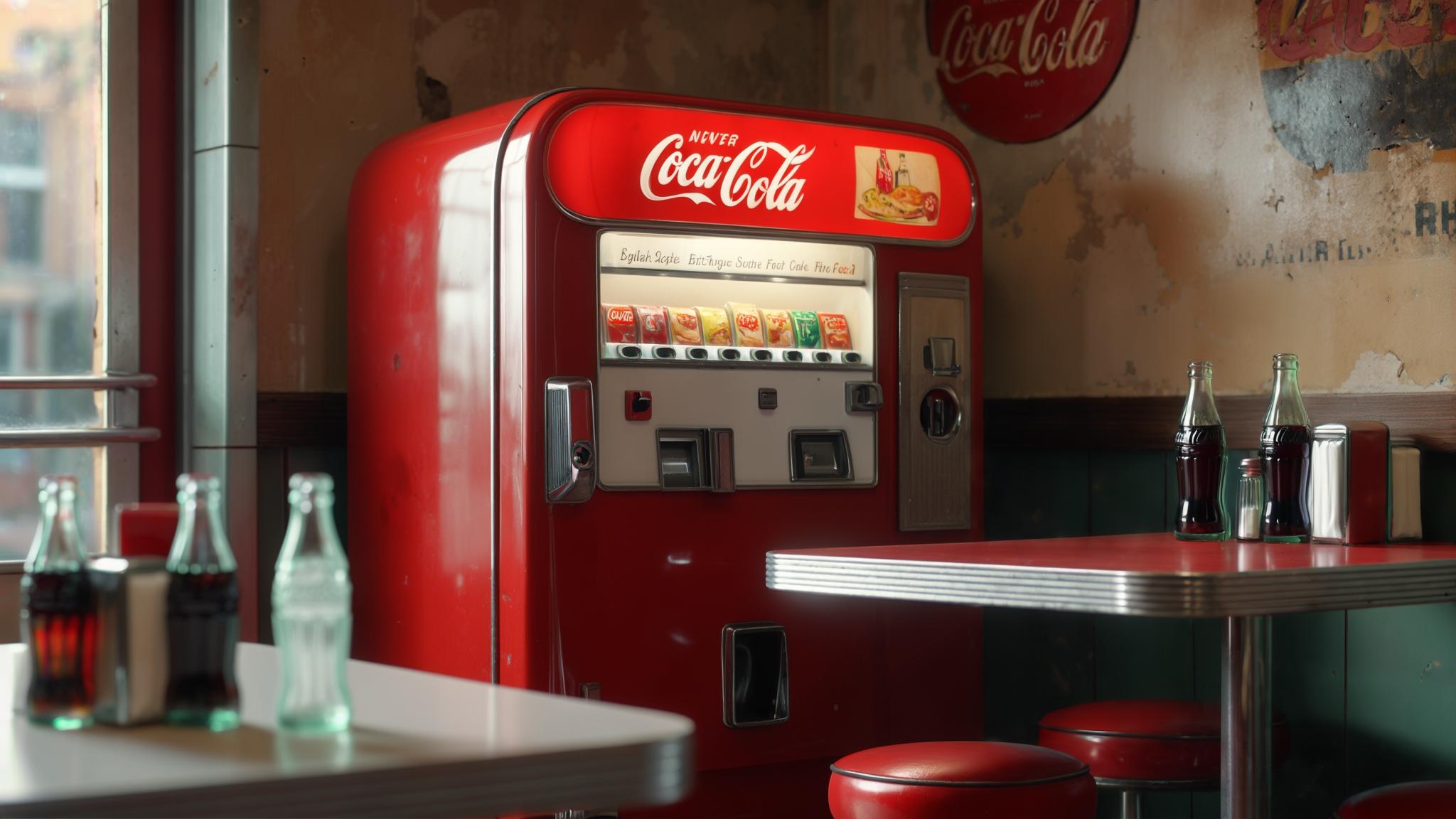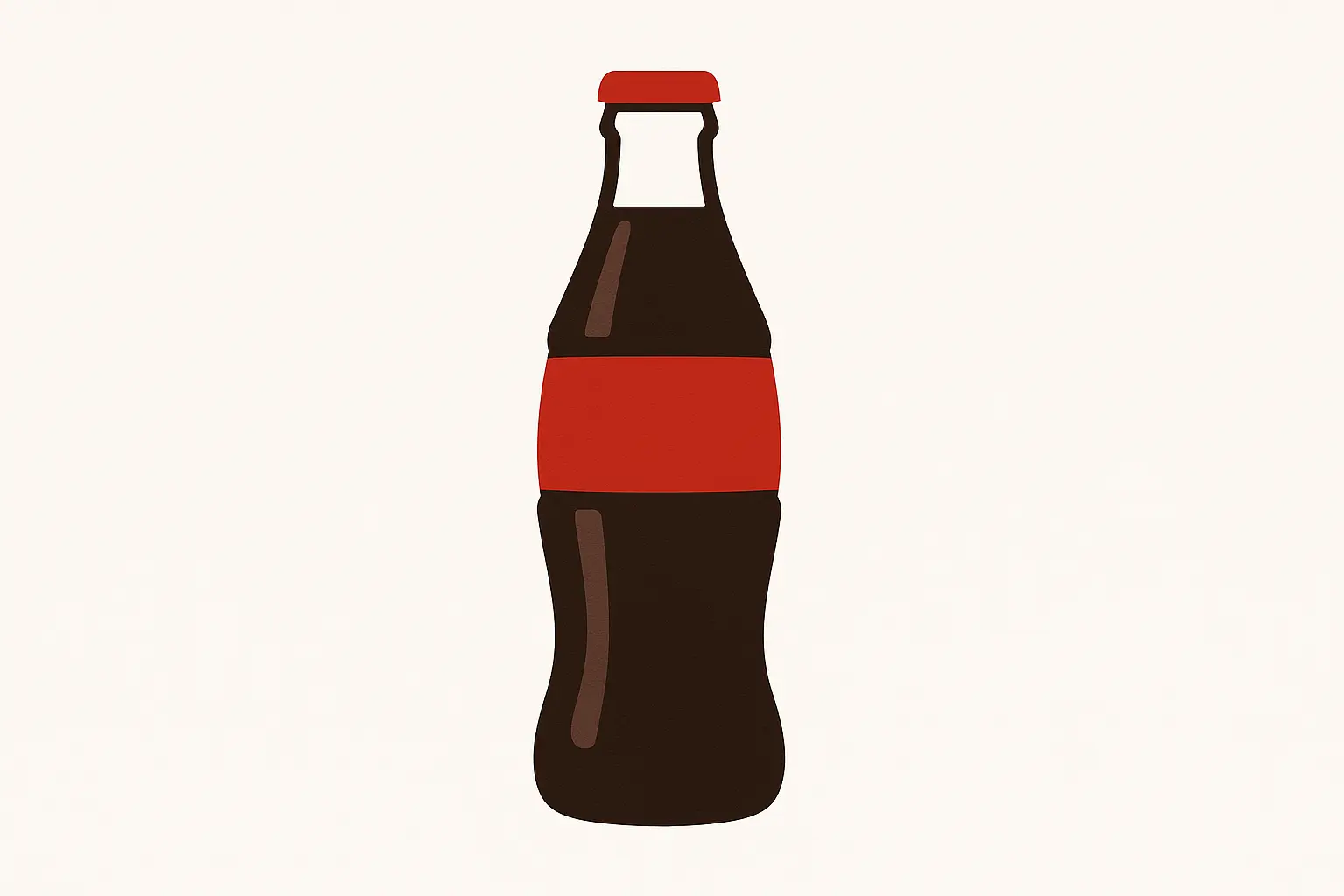
Established in 1886, Coca-Cola has grown from serving just nine drinks a day to an incredible 1.9 billion servings daily according to Sprintzeal’s 2025 marketing analysis. That kind of growth is pretty incredible when you think about it, and there’s a lot we can learn from how they got there.
But even this beverage giant had one of marketing’s most infamous disasters – the New Coke launch of 1985. And honestly, what makes this story so fascinating is how a company with all that money and sophisticated market research could get things so spectacularly wrong. I’ve spent years digging into this coca cola case study, and what really gets me is how the disaster actually taught the entire industry invaluable lessons about what brands really mean to people.
Table of Contents
-
The New Coke Disaster of 1985
-
Coca-Cola’s Modern Marketing Evolution
-
Strategic Marketing Framework Analysis
-
Implementation Steps for Marketing Professionals
TL;DR
-
New Coke’s 1985 failure taught us that emotional connections with brands beat taste preferences every single time
-
All the market research in the world means nothing if you’re not measuring what actually matters to people
-
Sometimes a crisis can make your brand stronger than it was before the mistake happened
-
Global brands need to adapt locally without losing what makes them special
-
Digital marketing requires real engagement, not just posting on every platform
-
When customers get really angry, it often shows they care more than any focus group ever revealed
The New Coke Disaster of 1985
The New Coke launch of 1985 is basically marketing’s biggest “oops” moment, showing how even the smartest companies can completely misread their customers. What seemed like a logical business decision based on taste tests turned into a cultural crisis that taught every marketer a harsh lesson about the difference between what products do and what brands mean.
I’ve always been amazed by how confident Coca-Cola executives were about this decision. They had data, research, and what looked like solid reasoning. The new coke disaster wasn’t born from being reckless – it came from completely misunderstanding what their brand actually meant to people.
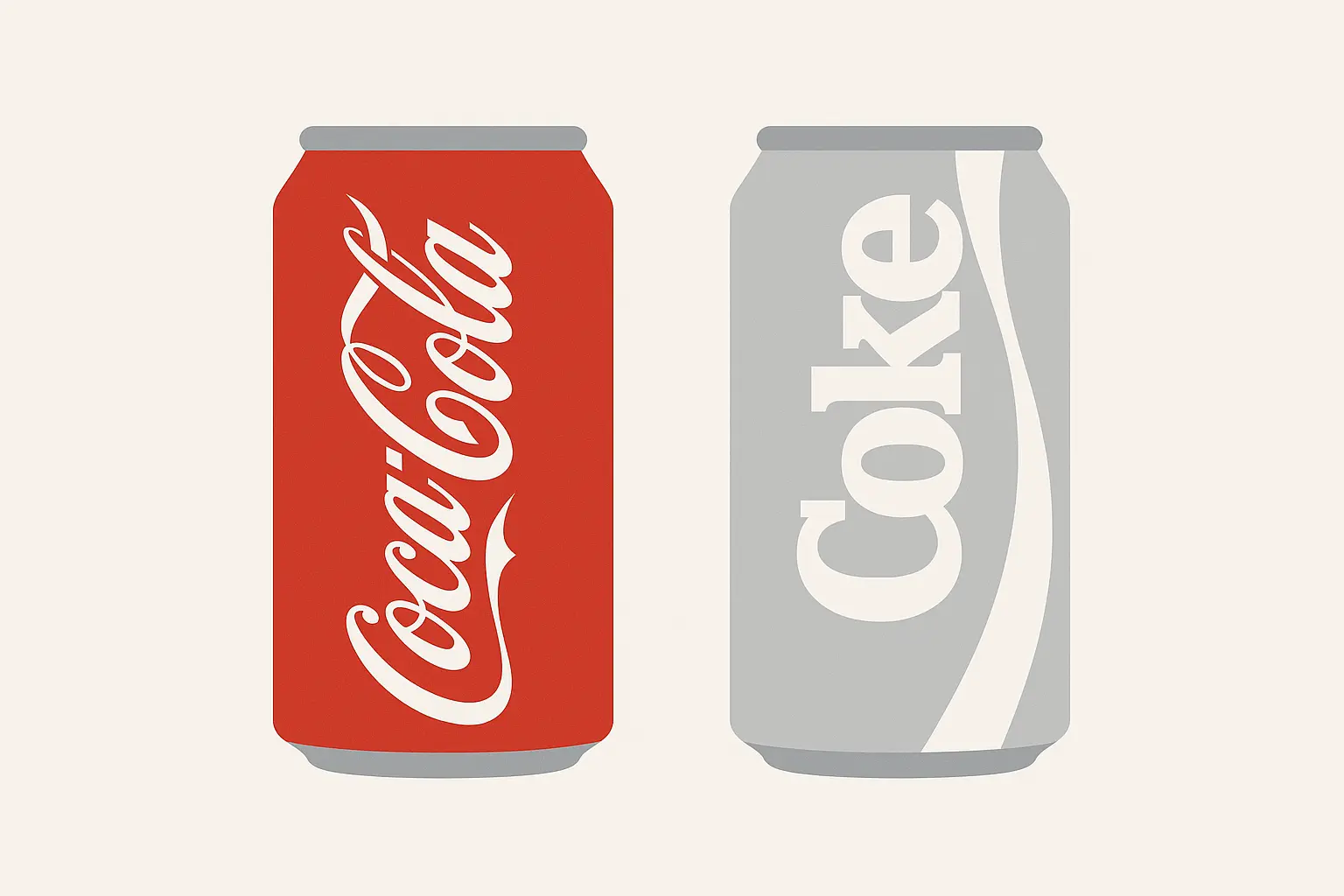
The Strategic Context Behind New Coke
Coca-Cola executives weren’t just making random decisions when they messed with their flagship product. They were responding to real competitive threats and shrinking market share, but their analysis missed the most important factor: what Coke actually meant to people.
The pressure was coming from everywhere. Board meetings were getting tense. Shareholders were asking tough questions. The company that had owned the cola market for nearly a century was watching their lead disappear.
Market Share Erosion Analysis
Here’s the brutal truth Coca-Cola faced in the early 1980s: Pepsi was winning. Their market share was shrinking, especially with younger consumers who were supposed to be their future.
According to The Branding Journal’s analysis, by 1980, Pepsi actually beat Coke in supermarket sales for the first time, grabbing 29.3% of the market while Coke had 29%. Think about that – after nearly a century of dominance, they were suddenly losing.
The numbers were genuinely scary. Pepsi had closed the gap big time, and internal projections showed things getting worse if nothing changed. Can you imagine those boardroom discussions? Executives staring at charts showing their iconic brand losing ground every quarter.
But here’s what’s fascinating to me: they focused on completely the wrong stuff. Market share percentages and demographic breakdowns told them they had a problem, but didn’t reveal why people actually chose one cola over another. Understanding what really drives consumer behavior requires sophisticated market analysis techniques that dig way deeper than surface numbers.
|
Market Share Comparison (1980) |
Coca-Cola |
Pepsi |
|---|---|---|
|
Supermarket Sales |
29.0% |
29.3% |
|
Brand Loyalty (Exclusive Drinkers 1982) |
12% |
11% |
|
Brand Loyalty (Exclusive Drinkers 1972) |
18% |
4% |
|
Annual Growth Rate |
2% |
15% |
The Pepsi Challenge Impact
Those blind taste tests were everywhere in the early ’80s. You couldn’t escape them. Pepsi’s marketing team was brilliant – they turned product comparison into entertainment while systematically destroying Coke’s taste reputation.
The campaign worked because it was simple and visual. People could see others choosing Pepsi over Coke when they couldn’t see the labels. For Coca-Cola executives, this created an existential crisis about their core product.
What they didn’t realize was that the Pepsi Challenge succeeded precisely because it stripped away everything that made Coke special to consumers. Take away the branding, the memories, the cultural associations – and you’re left with just flavored sugar water. Basically, Coca-Cola fell into Pepsi’s trap. They started believing that taste was all that mattered to people.
Consumer Research Methodology Flaws
Coca-Cola did extensive taste testing before launching New Coke. We’re talking nearly 200,000 taste tests according to The Branding Journal, which showed people preferred the new version they’d created. The research looked bulletproof with a 53-47 margin in favor of the new formula.
Focus groups liked the sweeter taste. All the data supported the change. Every single metric pointed toward success.
Except they never asked the right question: “How would you feel if we replaced Coca-Cola with this new formula?” They tested taste preferences, not emotional attachment. They measured product performance, not what the brand meant to people.
The Critical Research Gap:
-
What Coca-Cola Asked: “Do you prefer the taste of Formula A or Formula B?”
-
What They Should Have Asked: “How would you feel if we permanently replaced your familiar Coca-Cola with this new formula?”
-
Why It Mattered: The first question measures product preference; the second measures emotional attachment and potential backlash.
The Launch and Immediate Backlash
When Coca-Cola announced new coke in April 1985, they thought they were ready for some pushback. What they got instead was like accidentally kicking a hornet’s nest. Americans didn’t just complain about a product change – they acted like someone had stolen their childhood memories.
The announcement itself was pretty standard corporate stuff. Press releases talked about “improved taste” and “extensive consumer research.” The coca-cola marketing team figured they’d get some grumbling, maybe a few angry letters, then people would move on.
Boy, were they wrong.
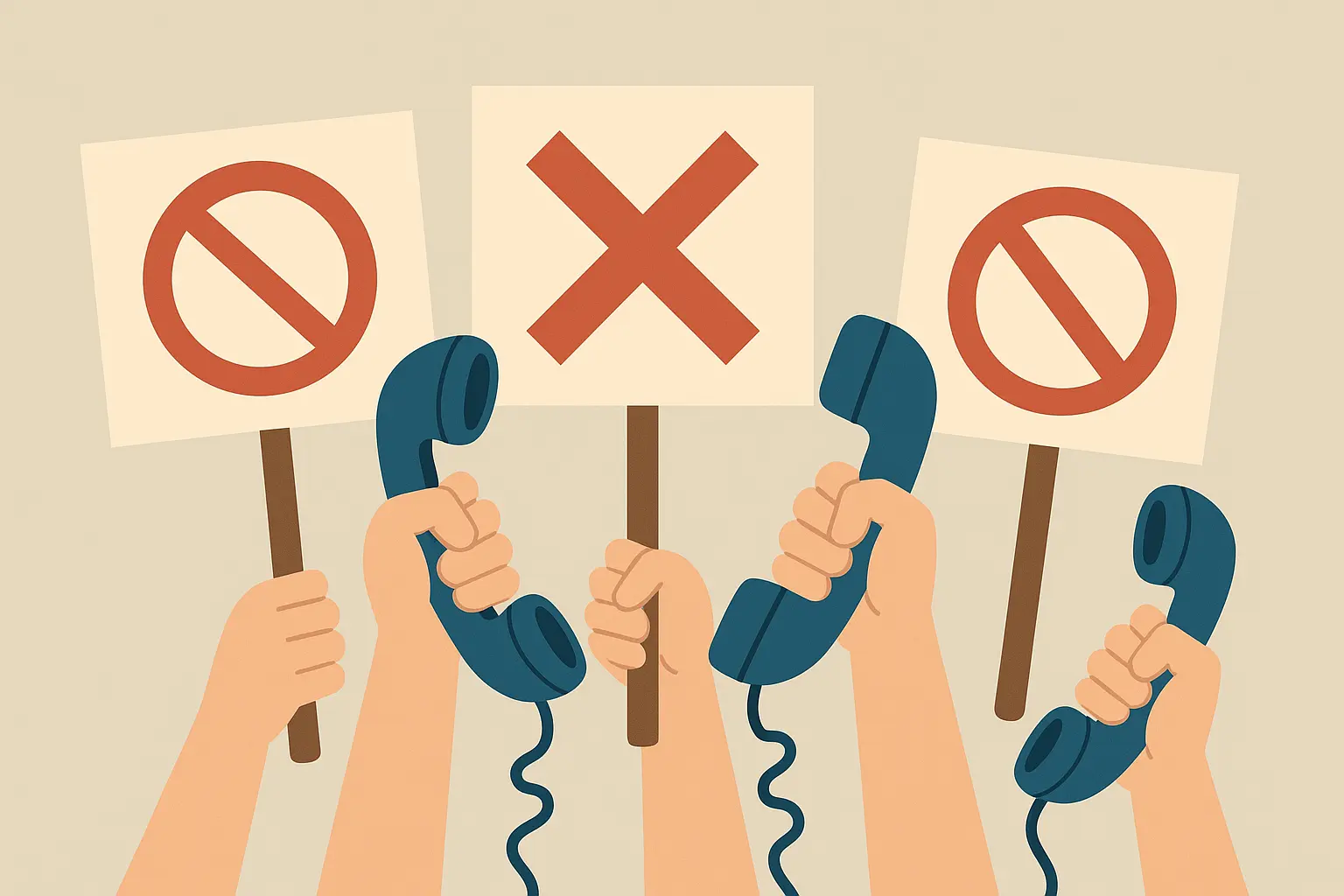
Consumer Emotional Response
Within hours – not days, hours – Coca-Cola’s phone lines were completely jammed. And these weren’t your typical customer service calls. People were crying on the phone. Actually crying. Over soda.
I’ve read some of those call transcripts, and honestly, they’re tough to get through. One person said it felt like losing a family member. Another caller was so upset they could barely speak. These weren’t complaints about taste – people felt personally betrayed.
The company got hammered with over 400,000 calls and letters. Think about that for a second – in 1985, before email or social media, nearly half a million people were angry enough to pick up the phone or write an actual letter. That’s some serious emotional investment.
People started hoarding original Coke like it was going extinct. They organized boycotts. Some folks treated this like a national crisis, which, looking back, maybe it kind of was.
Media Coverage Amplification
The news media jumped on this story like it was the scoop of the century. What started as a simple product announcement turned into front-page news everywhere. TV reporters were interviewing upset customers like they were covering a natural disaster.
And here’s the thing – every news story made it worse. Each report about angry consumers encouraged more people to speak up. It became this snowball effect where the coverage itself became part of the story.
Reporters found the most emotional people they could and put them on camera. Suddenly the narrative wasn’t “Company improves product” – it was “Big Corporation betrays loyal customers.” That’s exactly the opposite of what any marketing team wants to hear.
The Recovery Strategy
Here’s where Coca-Cola actually showed some class. Instead of doubling down on their mistake or making excuses, they did something pretty rare in corporate America – they admitted they screwed up and fixed it.
Classic Coke Reintroduction
Seventy-nine days. That’s how long Coke stuck to their guns before basically saying, “Okay, okay, you win.” On July 11, 1985, they announced they were bringing back the original formula as “Coca-Cola Classic.”
The press conference was something else. These executives didn’t try to spin it or blame anyone else. They just said, “We listened to you, and we’re bringing back what you love.” Simple as that.
And you know what happened? Sales went through the roof. People who had maybe taken Coke for granted suddenly remembered how much they actually loved it. It’s like that thing where you don’t miss something until it’s gone, except in this case, millions of people realized it all at once.
Conspiracy Theory Management
Almost immediately, people started wondering if this whole thing was planned. I mean, think about it – what better way to make people appreciate something than to take it away for a while?
The conspiracy theory was pretty tempting. Coke creates fake controversy, people get upset, then they “listen to customers” and bring back the original, looking like heroes while generating massive publicity. Pretty clever, right?
Company executives spent years swearing up and down that it wasn’t planned. And honestly, that was probably the smart move. If they’d admitted to manipulating people’s emotions like that, the backlash would’ve been way worse than the original New Coke disaster.
Whether it was planned or not, the whole thing did something amazing – it made people passionate about a soft drink again.
Long-term Brand Strengthening
Here’s the weird part – New Coke’s failure actually made Coca-Cola stronger. All that anger and upset revealed just how much people cared about the brand. No focus group or market research could have uncovered that level of emotional attachment.
People who had been casually drinking Coke for years suddenly realized it wasn’t just a beverage to them – it was part of their identity, their memories, their traditions. The brand went from being taken for granted to being genuinely cherished.
Plus, Coke learned some valuable lessons about messing with their core product. They figured out how to innovate around the edges while keeping the heart of the brand untouchable.
What Actually Worked in Their Recovery:
-
☐ They admitted the mistake quickly and clearly
-
☐ They listened without getting defensive
-
☐ They acted fast (under 3 months)
-
☐ They kept their messaging simple and honest
-
☐ They turned the crisis into a chance to strengthen relationships
-
☐ They documented what went wrong so they wouldn’t repeat it
Coca-Cola’s Modern Marketing Evolution
Fast forward to today, and Coke’s marketing looks completely different from those 1980s TV commercials. They’ve had to figure out how to stay relevant across generations while keeping that emotional connection that saved them during the New Coke crisis.
Watching this transformation has been fascinating. I remember when coca-cola marketing meant mainly TV ads and billboards. Now they’re creating personal experiences and building online communities while somehow still feeling like the same brand your grandparents loved.

Digital Transformation and Personalization
Coke’s jump into digital marketing wasn’t just about moving their old ads to new platforms. They completely rethought how to connect with people in a world where everyone expects brands to know them personally.
The smart thing they did was realize that digital platforms aren’t just new places to put the same old messages. Each platform has its own culture, and you’ve got to respect that if you want people to pay attention.
Share a Coke Campaign Innovation
The “Share a Coke” campaign started in Australia in 2011 and became one of those ideas that seems obvious after someone else does it. They put people’s names on bottles instead of their logo. Simple, right?
But here’s what made it brilliant – they turned their packaging into social currency. People weren’t just buying soda anymore; they were buying bottles with their friends’ names on them. They were hunting through store coolers looking for their own name. They were taking photos and sharing them online.
Think about how gutsy this was – they took their most recognizable asset (that iconic logo) and made it secondary to human connection. That’s either genius or crazy, and it turned out to be genius.
The campaign worked because it made each bottle feel personal. Instead of being just another mass-market product, every bottle became a little gift or inside joke between friends.
Recent campaigns have gotten even more sophisticated. The Trade Desk case study shows how “Coca-Cola was able to measure their campaign’s impact on in-store and online sales” for the first time, achieving an impressive “189% uplift in sales during the campaign” through data-driven personalization. This kind of performance measurement requires sophisticated ROI calculation frameworks to accurately assess what’s actually working.
Social Media Integration Strategy
Here’s something Coke figured out that a lot of brands still struggle with – you can ‘t just copy and paste the same content across every social platform. Each one has its own vibe, and people can tell when you’re not getting it.
On TikTok, they jump on trends and work with creators who actually understand the platform. On Instagram, they focus on those perfect lifestyle shots that make you want to be wherever that photo was taken. On Facebook, they’re more about community building and longer stories.
The key thing is they don’t try to make one piece of content work everywhere. They get that TikTok culture is different from Instagram culture, which is different from Facebook culture. Same brand, different conversations.
Global Brand Consistency vs. Local Adaptation
Running a global brand is like being a translator for 200 different cultures at once. You’ve got to keep the core of what makes you “you” while making sure you’re not accidentally offending anyone or missing local opportunities.
Coke’s learned this lesson through some trial and error over the years. What works great in one country can completely bomb in another, even when you think you’re saying the same thing.
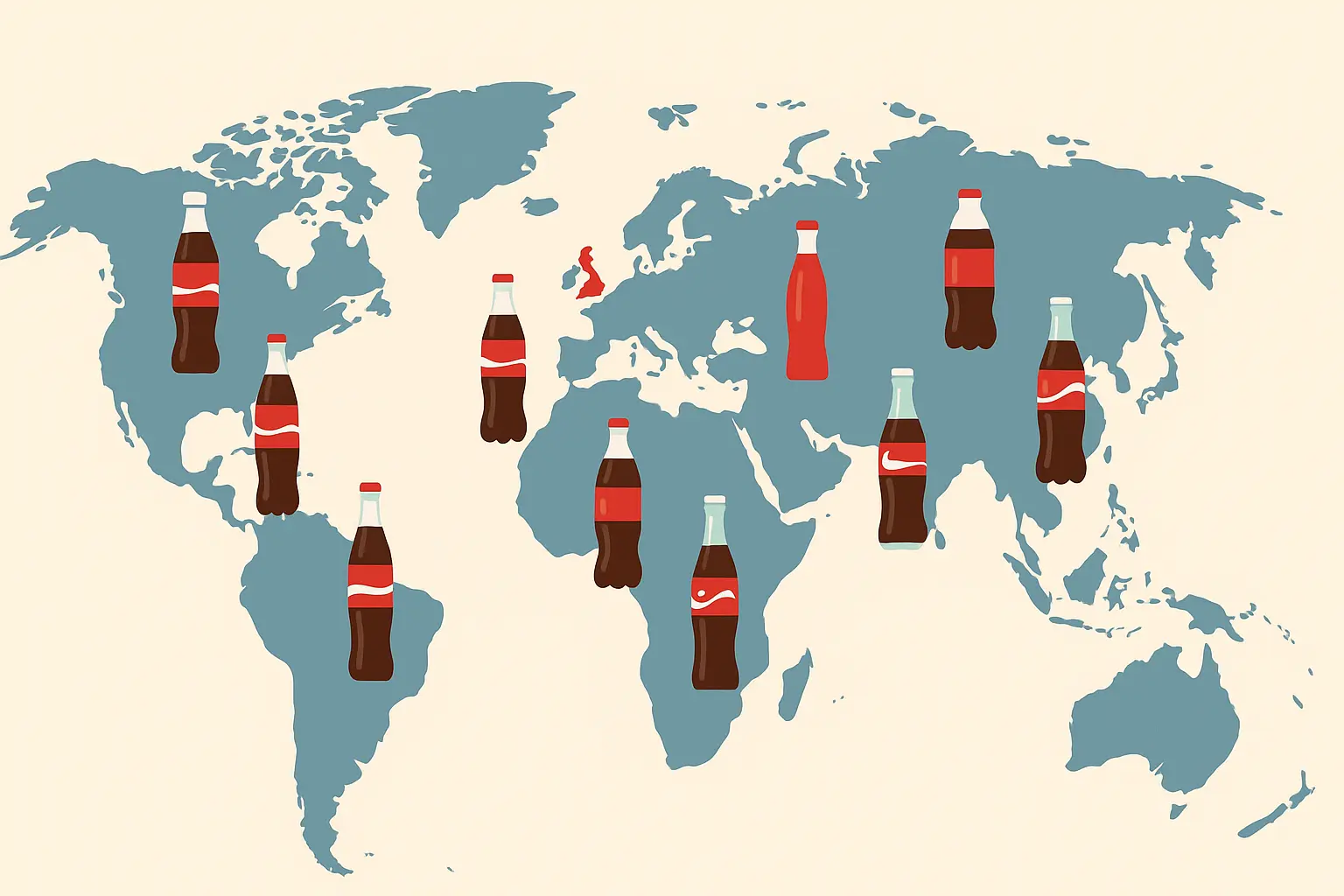
Cultural Sensitivity in Marketing
When you’re selling to people in over 200 countries, you’re going to run into some cultural differences. Coke’s approach goes way beyond just translating their ads – they basically reimagine their campaigns for different cultures.
In India, they create campaigns around local festivals like Diwali that feel genuinely Indian, not like American ideas dressed up in Indian clothes. In Japan, they’ve developed completely different product lines that make sense for Japanese business culture and taste preferences.
The tricky part is staying recognizable as Coca-Cola while not stepping on cultural landmines. They’ve learned that what’s funny in one culture might be offensive in another, and what’s meaningful in one place might be completely irrelevant somewhere else.
Regional Product Innovation
Here’s something that might surprise you – in Japan alone, Coke has launched hundreds of unique flavors that would never work in American markets. Green tea Coke, anyone?
These aren’t just random experiments. They serve multiple purposes: they show respect for local tastes, they get people talking about the brand, and sometimes they discover something that works in other markets too.
The smart thing about their coca cola marketing strategy is that these regional products still feel like Coca-Cola. You might not want to try Green Tea Coke yourself, but you can see how it fits with the brand if you’re thinking about it from a Japanese perspective.
Some Wild Regional Flavors They’ve Actually Made:
-
Japan: Green Tea Coca-Cola, Lemon-Do (yes, alcoholic), sakura (cherry blossom) seasonal flavors
-
India: Thums Up (they bought a local brand), Maaza mango drinks, special Diwali packaging
-
Latin America: Inca Kola in Peru, various tropical fruit flavors
-
Middle East: Non-alcoholic malt beverages, special Ramadan campaigns
Localized Campaign Execution
When Coke takes a global campaign idea and adapts it for local markets, the results can be pretty different while still feeling connected. A campaign about “sharing moments” might focus on big family gatherings in one culture and close friendships in another, depending on what matters most to people in that area.
They work with local agencies and cultural experts to make sure their campaigns don’t just avoid mistakes – they actually connect with people authentically. The best localized campaigns feel like they were created specifically for that market, not adapted from somewhere else.
Sustainability and Purpose-Driven Marketing
These days, people expect brands to care about more than just making money. Coke has had to figure out how to talk about environmental responsibility and social issues without sounding preachy or fake.
The challenge is integrating these messages naturally. Nobody wants to be lectured about plastic waste while they’re just trying to enjoy a soda.
Environmental Impact Communication
Let’s be honest – plastic waste is a real problem for beverage companies, and Coke can’t just ignore it. They’ve had to address this head-on in their marketing, which isn’t easy when your product is literally packaged in plastic.
Instead of getting defensive or making vague promises about “caring for the planet,” they’ve focused on specific actions and measurable goals. Their “World Without Waste” initiative talks about concrete things like making all packaging recyclable by 2025 and using 50% recycled content by 2030.
The smart approach is making environmental responsibility part of what Coca-Cola stands for, not something separate they tacked on because they had to.
|
Coca-Cola Sustainability Goals 2025-2030 |
Target |
Timeline |
|---|---|---|
|
Recyclable Packaging |
100% |
2025 |
|
Recycled Content in Packaging |
50% |
2030 |
|
Carbon Reduction |
25% |
2030 |
|
Water Stewardship Programs |
Global Expansion |
Ongoing |
|
Renewable Energy Focus |
Primary Energy Source |
2030 |
Strategic Marketing Framework Analysis
All of Coke’s successes and failures over the years teach us some pretty universal lessons about how brands work and what consumers actually care about. These insights apply way beyond just selling beverages – they’re relevant for any brand trying to balance staying current with staying true to what made them special in the first place.
What strikes me most about studying their coca cola marketing strategy is how the fundamental challenges haven’t really changed. Sure, technology evolves and platforms come and go, but the core challenge of genuinely connecting with people stays exactly the same.
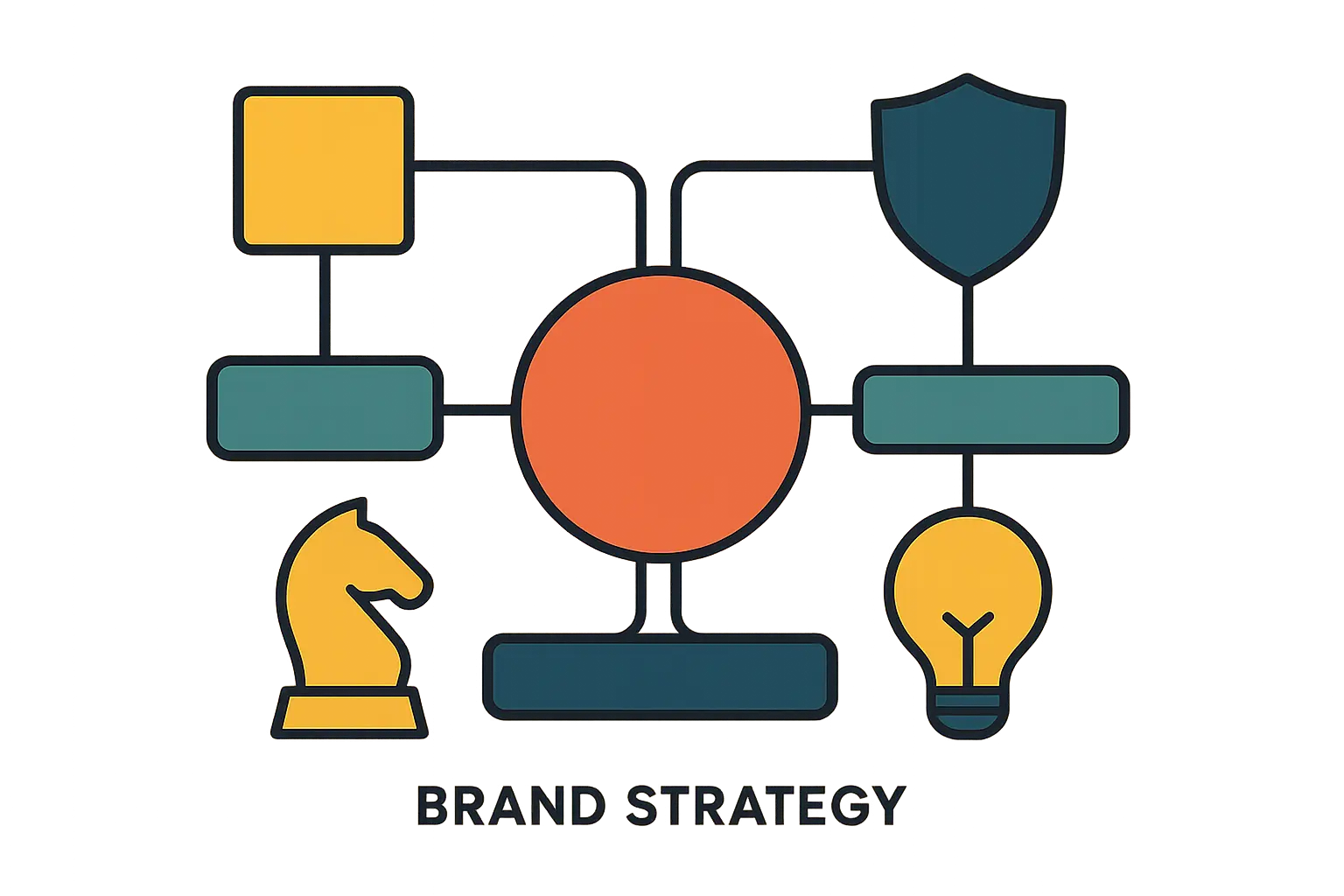
Brand Equity Management Principles
Protecting what makes your brand valuable requires understanding what consumers actually care about versus what you think they should care about. Coke’s experience shows that the most important parts of your brand might be hiding in places you’d never think to look.
Coca-Cola has never really been in the business of selling drinks. They’ve been selling moments, memories, and a sense of belonging to something bigger. Getting that distinction is crucial for any brand trying to build real, lasting relationships with customers.
Emotional Connection Preservation
The New Coke disaster proved that people’s feelings about brands can completely override logical product preferences. Folks didn’t stick with original Coke because it tasted better – they chose it because of what it meant to them personally.
These emotional connections build up over years through repeated experiences, cultural moments, and personal memories. You can’t fake them or transfer them to new products without being really, really careful about how you do it.
Understanding these connections requires different research approaches than typical market studies. Instead of just asking what people buy, you need to explore how brands fit into their lives, their sense of identity, and their relationships with other people. Measuring these deeper connections requires advanced analytics approaches that go beyond surface-level metrics to understand what people actually think and feel.
Heritage Brand Modernization
Updating classic brands for today’s audiences is like performing surgery – you need a steady hand and a clear understanding of what you absolutely cannot afford to mess up.
Coca cola marketing learned this lesson the hard way with New Coke, but they’ve applied it successfully everywhere else. They’ve updated their advertising, packaging, and marketing approaches while keeping the core product and brand identity completely intact.
The trick is figuring out which elements are sacred to consumers and which ones you can change without damaging what makes the brand special. People will accept evolution, but they’ll fight you on revolution.
What You Can and Can’t Touch:
-
Sacred Elements (Never Change): Original formula, bottle shape, red color, classic logo
-
Adaptable Elements (Change Carefully): Ad themes, packaging designs, campaign messages, celebrity partnerships
-
Innovation Areas (Safe to Experiment): New product lines, digital experiences, sustainability efforts, regional flavors
Consumer Research and Market Intelligence
Good consumer research goes way deeper than asking people what they like. You need to understand why they make the choices they do, what emotions drive their decisions, and what role your brand plays in their daily lives.
The new coke case shows what happens when you rely too heavily on numbers without understanding the story behind those numbers.
Qualitative vs. Quantitative Insights
New Coke won every taste test but failed spectacularly in real life. That tells you everything you need to know about the difference between measuring what people do and understanding why they do it.
Numbers tell you what’s happening, but stories tell you why it’s happening. You need both, but the “why” often matters more than the “what” when you’re making big brand decisions.
The most dangerous situation is when your data looks good but you’re measuring the wrong things. New Coke’s taste test success completely missed the emotional attachment people had to the original formula.
Predictive Analytics in Brand Decisions
Today’s brands have access to tools that can predict consumer reactions way better than the research methods available in 1985. These tools can spot patterns and connections that human researchers might miss completely.
But here’s the thing – predictive analytics are only as good as the data you feed them. If you’re not measuring emotional attachment, cultural significance, and what brands actually mean to people, your predictions will be incomplete no matter how fancy your algorithms are.
The goal is combining data science with genuine human understanding to make smarter decisions about brand changes and marketing strategies.
Cultural Context Research Methods
Understanding how brands fit into people’s cultural identity requires research methods that go beyond surveys and focus groups. You need to actually observe how people interact with brands in their real lives.
This type of research reveals the rituals, traditions, and social meanings connected to brands that people might not even be consciously aware of. These insights are crucial for avoiding cultural mistakes and finding opportunities for deeper engagement.
This is especially important for global brands operating in different markets with completely different cultural norms and values.

Crisis Communication and Brand Recovery
Managing brand crises requires honest communication, willingness to admit when you’ve messed up, and strategies for turning negative situations into opportunities to strengthen relationships with customers.
Coke’s New Coke recovery gives us a pretty clear playbook for effective crisis management.
Stakeholder Communication Strategies
During the New Coke crisis, Coca-Cola had to manage conversations with lots of different groups: customers, media, employees, investors, and bottling partners. Each group cared about different things and needed different types of reassurance.
The key was staying consistent across all communications while tailoring the message to what each audience specifically cared about. Customers needed to hear that their voices mattered, while investors needed confidence that the company knew how to make good decisions.
Being transparent was crucial throughout the whole thing. Instead of making excuses or blaming other people, Coke acknowledged their mistake and focused on fixing it. This approach kept their credibility intact and showed they were responsive to customer feedback.
Implementation Steps for Marketing Professionals
Marketing professionals can take Coca-Cola’s lessons and turn them into practical frameworks for research, crisis prevention, and strategic planning that balance innovation with brand protection. These aren’t just theoretical concepts – they’re actionable steps that help avoid common mistakes while building stronger relationships with customers.
The coca cola marketing case study offers insights that work across industries. I’ve seen companies in tech, fashion, and financial services apply these principles successfully to their own brand challenges.
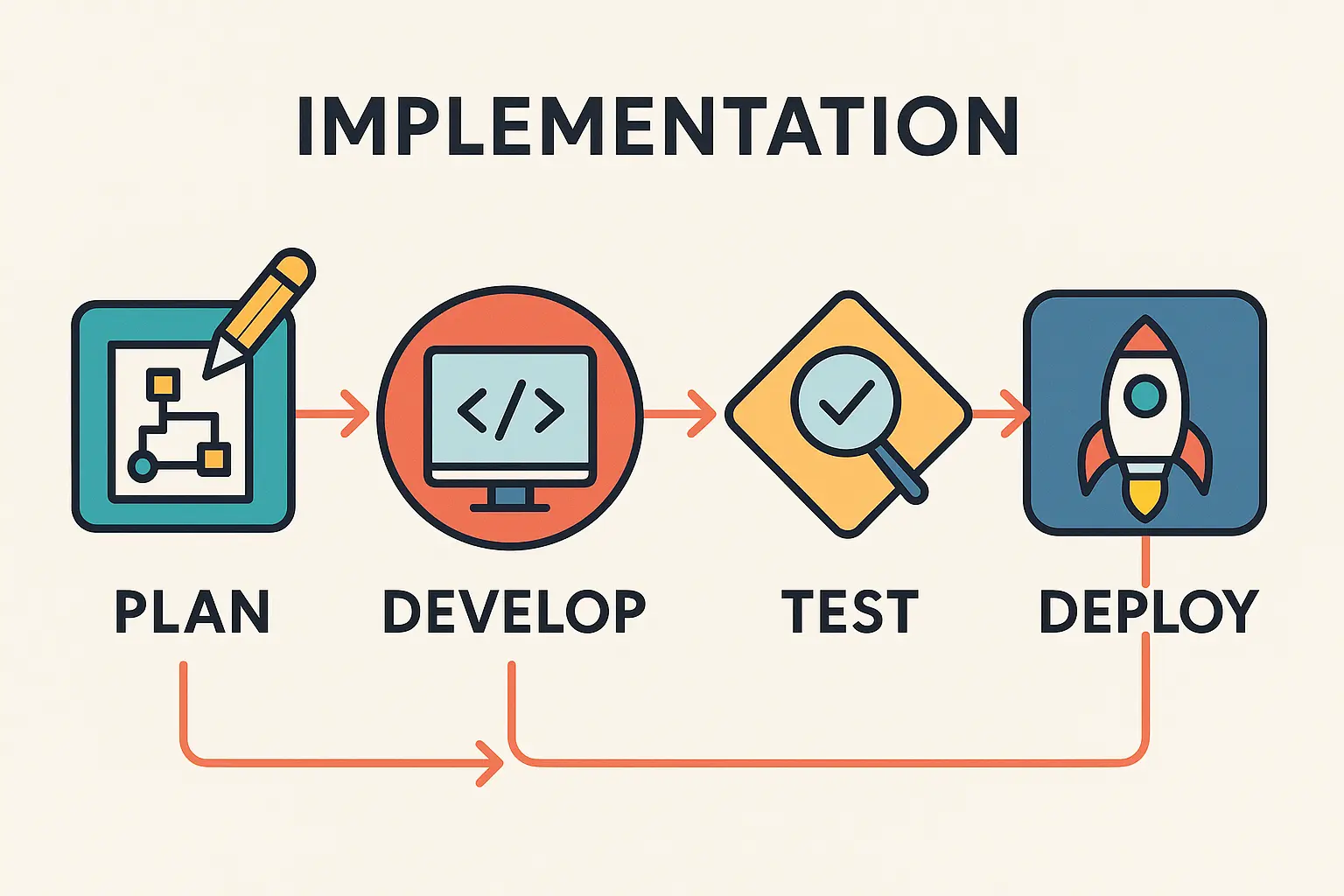
Applying Coca-Cola Case Study Insights
Putting Coca-Cola’s lessons into practice requires systematic approaches to research, brand management, and crisis prevention. These frameworks help marketing professionals make better strategic decisions while avoiding the mistakes that led to New Coke’s failure.
Pre-Launch Research Protocol
You need research methods that go way beyond product features to understand emotional attachment, cultural significance, and what your brand actually means to people. This means combining hard data with real insights about how consumers relate to your brand on a personal level.
Don’t just ask people if they like your new product – ask them how they’d feel if you changed something they’re used to. Test what the change means to them, not just whether they prefer the new version.
Set up consumer advisory panels with people who genuinely care about your brand. These should be customers who have strong emotional connections and can give you honest feedback before you make public announcements.
Your Research Should Cover:
-
☐ How people would actually react to changes (not just preferences)
-
☐ What your brand means in people’s daily lives
-
☐ Cultural and emotional significance of brand elements
-
☐ Potential negative reactions before you worry about positive ones
-
☐ Real-world usage contexts, not just laboratory conditions
-
☐ Heritage value and nostalgic connections
-
☐ Social meanings and relationship aspects
Crisis Prevention Framework
Set up early warning systems using social listening tools and sentiment analysis to catch potential problems before they explode into full crises. The faster you can spot trouble brewing, the easier it is to address.
Do scenario planning for any major brand decisions. Don’t just think about best-case outcomes – seriously consider what could go wrong and how you’d handle it.
Create rapid response protocols so you can address consumer concerns quickly and honestly. The longer you wait to respond to problems, the bigger they tend to get. Effective crisis prevention requires comprehensive analytics auditing processes to identify potential issues before they impact brand reputation and consumer relationships.
Brand Heritage Assessment Process
Regularly evaluate which brand elements are absolutely sacred to consumers versus which ones you can change without damaging what makes your brand special. This should be an ongoing process, not something you only do during major changes.
Figure out the emotional and cultural associations people have with different parts of your brand. Understanding these connections helps you predict which changes might trigger negative reactions.
Test any brand changes with your most loyal customers first. These people usually have the strongest emotional connections and can give you early warning about potential problems.
Marketing Strategy Development Steps
Creating effective marketing strategies requires frameworks that balance innovation with brand consistency, learning from Coca-Cola’s strategic evolution. These practical approaches help market ers build campaigns that connect with consumers while protecting what makes their brand valuable.
Consumer Segmentation Analysis
Use segmentation techniques that go beyond basic demographics to include emotional brand relationships, how people actually use your product, and what cultural significance it has for them. Traditional demographic segmentation misses the deeper connections that actually drive brand loyalty.
Figure out how different groups of customers relate to your brand emotionally. Some people might see your product as purely functional, while others view it as part of who they are. These different relationships need different marketing approaches.
Look at usage contexts to understand when and why people choose your brand. The same person might have completely different reasons for buying your product in different situations, which means you need flexible messaging strategies.
Multi-Channel Campaign Integration
Develop campaigns that work across traditional and digital channels while maintaining consistent messaging but optimizing for how each platform actually works. Every channel should feel native to its platform while supporting your overall campaign goals.
Create content that can be adapted for different channels without losing its core message. Your Instagram content should feel authentically Instagram-like while supporting the same strategic objectives as your TV advertising.
Set up feedback loops between channels so insights from digital engagement can inform traditional media strategies and vice versa. Modern marketing requires constant optimization based on real-time performance data. Successful multi-channel integration depends on selecting the right content topics and themes that resonate across different platforms while maintaining brand consistency and audience engagement.
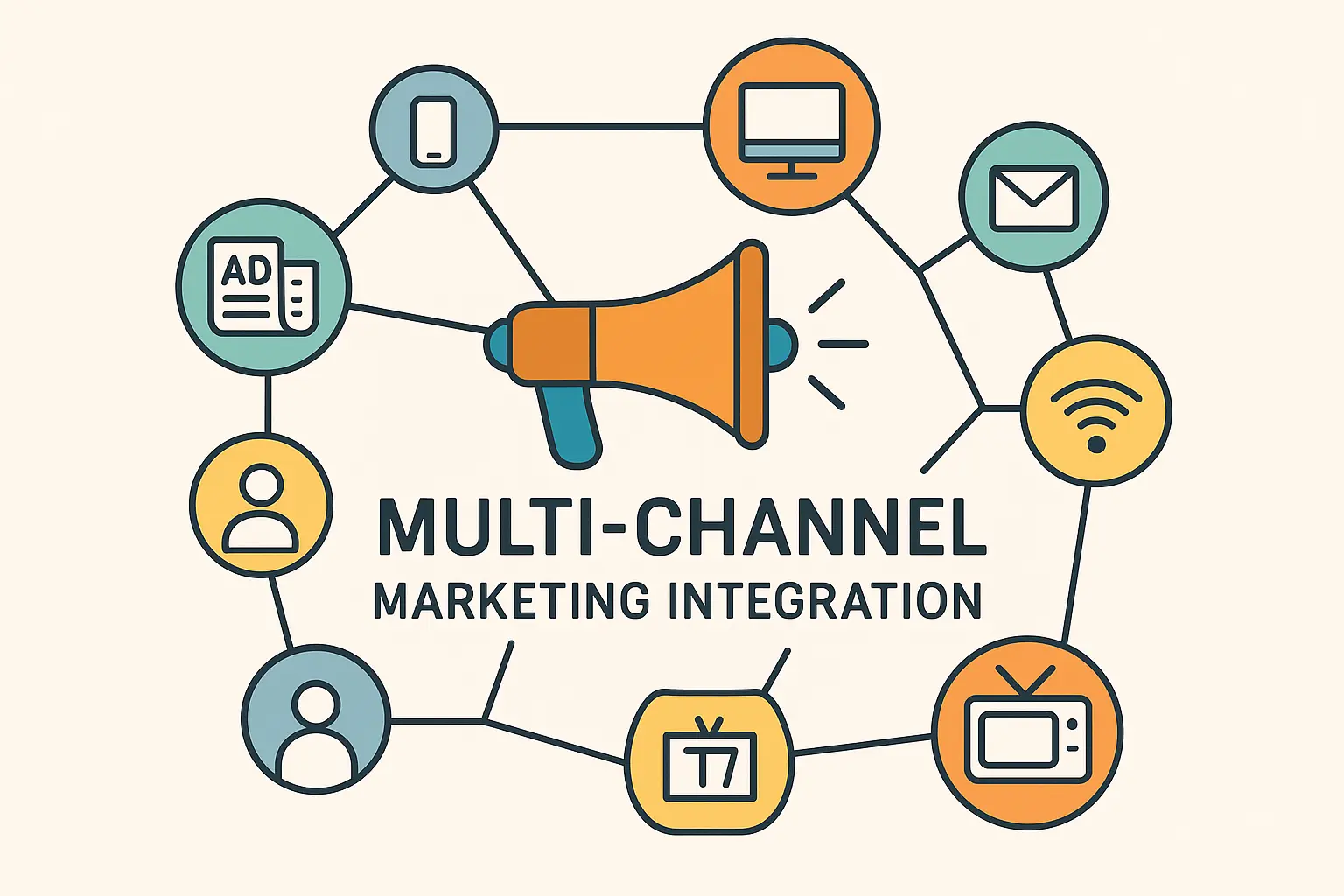
How The Marketing Agency Can Help
The Coca-Cola case study shows exactly why comprehensive, data-driven marketing strategies are essential for modern brands. While Coke’s New Coke disaster came from incomplete consumer research and misunderstood data, today’s brands can avoid similar mistakes through scientific approaches to market analysis and consumer insights.
The Marketing Agency’s approach addresses the exact problems that led to New Coke’s failure. We incorporate behavioral insights, emotional connection metrics, and cultural significance analysis – the kind of complete consumer understanding that could have prevented Coca-Cola’s mistake.
Our predictive analytics and risk assessment capabilities identify potential consumer backlash before launch, using advanced modeling to assess how brand changes might affect different consumer groups. We don’t just measure what people say they want – we analyze what actually drives their behavior.
Ready to avoid costly marketing mistakes while building stronger consumer connections? Contact The Marketing Agency today to discover how our data-driven approach can protect your brand equity while driving measurable growth.
Final Thoughts
The Coca-Cola case study stays relevant because it reveals basic truths about consumer psychology and brand management that don’t change, no matter what industry you’re in or what year it is. The lessons from New Coke’s failure and recovery keep informing marketing strategies decades later, reminding us that successful marketing requires understanding not just what consumers want, but why they want it and what brands actually mean in their lives.
New Coke taught us that people don’t just buy products – they buy meaning, memories, and identity. The disaster happened because Coca-Cola focused on product features while completely ignoring what the brand meant to people. This lesson applies to every brand decision, from small packaging changes to major strategic shifts.
The recovery strategy showed that admitting mistakes and actually listening to consumers can strengthen brand relationships. Coke’s willingness to bring back the original formula showed respect for what customers really wanted and created deeper loyalty than existed before the crisis.
Modern marketing has more tools and data than ever before, but the basic challenge is still the same: understanding what your brand truly means to consumers and protecting that meaning while staying relevant. The brands that succeed combine analytical thinking with emotional intelligence, using data to understand not just what consumers do, but what they actually care about.


